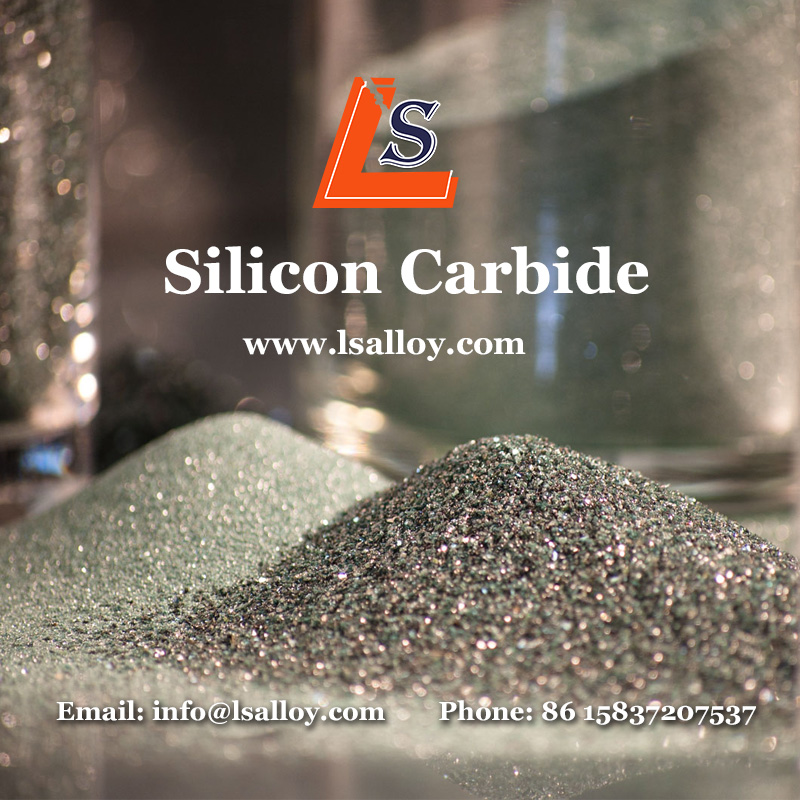From the skyscrapers that define our city skylines to the cars we drive and the kitchens we cook in, modern civilization is built on a foundation of steel. But not all steel is created equal. The strength, durability, and corrosion resistance of high-quality steel come from precisely blended ingredients known as ferroalloys. And behind the production of these crucial alloys lies a powerful, often-overlooked material: Silicon Carbide (SiC).
This isn't just another industrial powder. Silicon carbide is a game-changer, a multi-talented agent that is reshaping how ferroalloys are made, making the process cheaper, cleaner, and more efficient. Let's pull back the curtain on this remarkable material and discover why it has become indispensable in the metallurgical world.
What Exactly is Silicon Carbide?
At its core, silicon carbide is a simple compound of silicon and carbon. But don't let its simple formula fool you. This material is a powerhouse of physical properties. It’s nearly as hard as a diamond, incredibly resistant to heat, and chemically stable. While you might find it in the form of sandpaper or abrasives, its most transformative role is happening inside the high-temperature furnaces that produce the metals of the future.
For the ferroalloy industry, SiC’s magic lies in its unique chemical composition. It is, in essence, a perfectly packaged combination of two of the most critical elements in metallurgy: silicon and carbon.

The Triple-Threat Role of SiC in Ferroalloy Production
Inside a smelting furnace, silicon carbide performs three vital jobs simultaneously, making it an exceptionally efficient and valuable raw material.
A Silicon Source: SiC is about 70% silicon. When it breaks down at high temperatures, it releases this silicon, which is a primary component in many essential alloys like ferrosilicon and silicomanganese.
A Carbon Source: Making up the remaining 30%, the carbon in SiC is highly reactive. Unlike traditional carbon sources like coke, this carbon is "pre-activated" and ready to participate in chemical reactions, speeding up the entire process.
A Powerful Reducing Agent: This is SiC’s superpower. To create a metal alloy, you must first extract the pure metal from its ore (its oxide form). This process is called reduction. Silicon carbide is an exceptionally strong reducing agent, even more potent than carbon alone. It efficiently strips oxygen away from metal ores like chromium oxide (Cr?O?) and manganese oxide (MnO?), freeing the pure metal to be alloyed.
This triple-action role means a single material can provide the silicon, the carbon, and the chemical energy needed for reduction, simplifying the entire production process.
Where Silicon Carbide Makes the Biggest Impact
While SiC is used across the ferroalloy board, its influence is most profoundly felt in two key areas:
1. High-Carbon Ferrochrome Production: This is the star player. Ferrochrome is the essential ingredient for making stainless steel, giving it its legendary corrosion resistance. Producing ferrochrome involves reducing chromium ore. Silicon carbide is the dominant reducing agent used today. It replaces more expensive materials and significantly improves the recovery rate of chromium, directly lowering the cost of producing the stainless steel we use in everything from medical devices to architectural masterpieces.
2. Ferrosilicon Production: Ferrosilicon is a workhorse in the steel industry, primarily used to remove oxygen (deoxidize) molten steel. Using SiC in its production can be more economical than using separate silicon and carbon sources, and it helps produce a higher-purity, lower-impurity alloy that is vital for specialty steels.
The Compelling Advantages of Switching to SiC
So, why are ferroalloy producers increasingly turning to silicon carbide? The benefits are clear and impactful:
??Significant Cost Reduction??: By replacing more expensive raw materials like high-grade chrome or a combination of coke and silica, SiC offers a direct path to lower production costs.
??Enhanced Energy Efficiency??: The high reactivity of SiC means the chemical reactions happen faster and at lower temperatures. This translates to lower electricity consumption in the furnace, a major operational cost and a win for the environment.
??Higher Purity Products??: High-purity SiC contains fewer impurities (like ash, phosphorus, or sulfur) compared to traditional carbon sources. This results in cleaner ferroalloys, which in turn lead to higher-quality, more reliable steel.
??Improved Process Stability??: Adding SiC helps create a more stable and controllable furnace environment, leading to smoother operations and consistent product quality.
Conclusion: The Strategic Material of Modern Metallurgy
Silicon carbide is far more than just a component; it is a strategic enabler for the entire ferroalloy and steel industries. It acts as a cost-cutting agent, an efficiency booster, and a quality enhancer all in one. By providing a superior source of silicon, carbon, and reducing power, SiC directly contributes to the production of stronger, more durable, and more affordable steel and stainless steel.
The next time you see a gleaming stainless steel appliance or a massive architectural structure, remember the hidden hero in its creation. Silicon carbide is the silent force working in the furnace, forging the building blocks of our modern world with unparalleled efficiency and power.
DM us for a free sample or tech guide.
